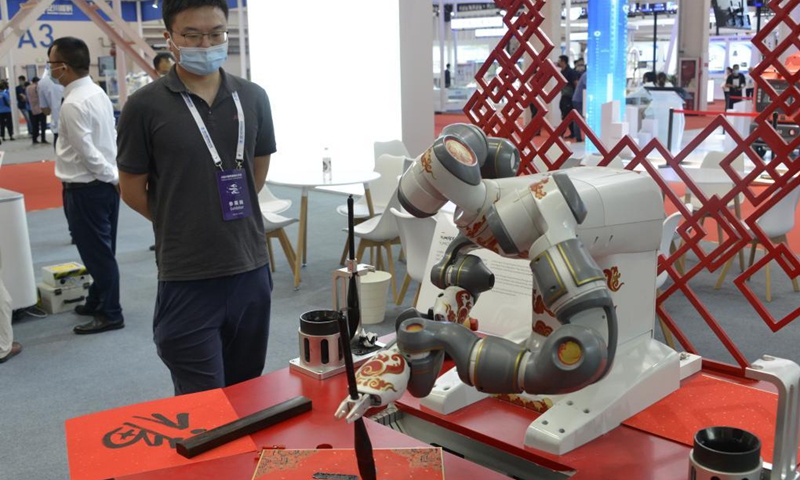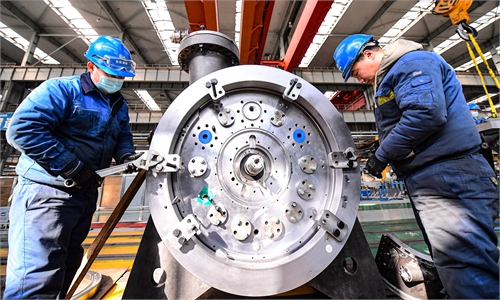Top Chinese science and tech official urges priority on fundamental research, calling for openness and cooperation

Photo taken on Sept. 10, 2021 shows a robot writing calligraphy at the World Robot Conference held in Beijing. The 2021 World Robot Conference is held in Beijing from Sept. 10 to 13. More than 110 enterprises and scientific research institutions brought over 500 products to the exhibition.(Photo: Xinhua)
The top Chinese science and technology official has called for priority to be placed on fundamental research, which is key to technology innovation, while also empathizing the importance on remaining globally competitive in terms of openness and cooperation in the scientific and technological area.
"Fundamental research and frontier exploration are our cognitive frontiers for expanding science, and they provide sources for technological innovation. They are the basic, cutting-edge, and critical logical starting points," Wang Zhigang, minister of science and technology, said on the sidelines of the annual national legislative session on Tuesday.
"We need to put fundamental research in a very important position, and at the same time, give young people more opportunities, open up science and technology projects among the youth, so that they can show their talent in scientific and technological innovation," the official said.
China's basic research spending hit 169.6 billion yuan ($26.84 billion) in 2021, accounting for 6.09 percent of the country's entire research and development (R&D) expenditure, data from the Ministry of Science and Technology showed in February, as the country moves closer to achieving its goal of increasing the ratio to over 8 percent by 2025 as part of a broader push to accelerate its technological rise.
China's total R&D input grew 14.2 percent year-on-year to 2.79 trillion yuan in 2021, and after deducting price factors, the growth rate was 9.4 percent, official data revealed.
R&D spending in 2021 accounted for 2.44 percent of China's GDP, reaching a new high, and the ratio was up 0.03 percentage points from 2020, underscoring China's continuously elevating tech innovation ability. Turnover of technology contracts exceeded 3.7 trillion yuan, far above R&D spending, according to Wang.
China rose to 12th on the Global Innovation Index 2021, up from the 34th in 2012, according to the World Intellectual Property Organization. The country remains the only middle-income economy to rank in the top 30.
Noting that China has been at the forefront globally in terms of openness and cooperation in scientific and technological areas, Wang said that the country will maintain the efforts in the future.
China has established scientific and technological cooperation with more than 160 countries and regions, and participated in more than 200 international organizations and multilateral mechanisms involving science and technology. Under these mechanisms, positive results have been achieved across industry and economy through scientific and technological exchanges, academic seminars, project cooperation, project research and others, according to Wang.
For example, in combating the COVID-19 pandemic, China has carried out effective cooperation with 17 countries including the US, the UK, Malaysia, and South Africa on the research and development of vaccines, drugs, and testing reagents.
Over the past year, the country signed 21 new inter-governmental scientific and technological cooperation agreements, and received more than 3,500 visits from foreign young scientists.


